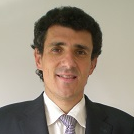Feature Papers in Microwave and Wireless Communications Section
A special issue of Electronics (ISSN 2079-9292). This special issue belongs to the section "Microwave and Wireless Communications".
Deadline for manuscript submissions: 31 December 2024 | Viewed by 4046
Special Issue Editors
Interests: antenna design; microwave components design; wireless communications; evolutionary algorithms; machine learning
Special Issues, Collections and Topics in MDPI journals
2. School of Engineering and Science, Tecnologico de Monterrey, Monterrey 64849, Mexico
Interests: wireless networks; performance evaluation; distributed systems; context-aware environments; IoT; next-generation wireless systems
Special Issues, Collections and Topics in MDPI journals
Interests: microwave and millimeter-waves antennas and circuits; microwave biomedical applications; innovative materials for antennas; electromagnetics in health safety
Special Issues, Collections and Topics in MDPI journals
Interests: antenna engineering; wireless power transfer; bioelectromagnetic (SAR reduction in mobile antennas, study of electromagnetic effects of human health)
Special Issues, Collections and Topics in MDPI journals
Interests: intelligent transport systems; advanced driver assistance systems; vehicle positioning; inertial sensors; digital maps; vehicle dynamics; driver monitoring; perception; autonomous vehicles; cooperative services; connected and autonomous driving
Special Issues, Collections and Topics in MDPI journals
Special Issue Information
Dear Colleagues,
We are pleased to announce that the Section Microwave and Wireless Communications is now compiling a collection of papers submitted by our Section’s Editorial Board Members and leading scholars in this field of research. We welcome contributions as well as recommendations from Editorial Board Members.
This Special Issue aims to publish high-quality papers, namely insightful and influential original articles or reviews in the field. We expect these papers to be widely read and highly influential. All papers in this Special Issue will be collected into a printed edition book after the deadline and will be well promoted.
Topics of interest include, but are not limited to:
- Microwave engineering;
- Wireless communication systems;
- Antennas and propagation;
- RF circuits and systems;
- Electromagnetic measurements;
- Radar systems design;
- Signal processing for wireless systems;
- Channel coding and error control;
- Multiple access techniques;
- Mobile and cellular networks;
- Satellite communication systems;
- Terahertz communications;
- Communication applications;
- 5G/6G.
Technical Committee Member:
Dr. Cesar Vargas-Rosales, Tecnologico de Monterrey
Dr. Sotirios K. Goudos
Prof. Dr. Francisco Falcone
Prof. Dr. Sandra Costanzo
Dr. Niamat Hussain
Dr. Felipe Jiménez
Guest Editors
Manuscript Submission Information
Manuscripts should be submitted online at www.mdpi.com by registering and logging in to this website. Once you are registered, click here to go to the submission form. Manuscripts can be submitted until the deadline. All submissions that pass pre-check are peer-reviewed. Accepted papers will be published continuously in the journal (as soon as accepted) and will be listed together on the special issue website. Research articles, review articles as well as short communications are invited. For planned papers, a title and short abstract (about 100 words) can be sent to the Editorial Office for announcement on this website.
Submitted manuscripts should not have been published previously, nor be under consideration for publication elsewhere (except conference proceedings papers). All manuscripts are thoroughly refereed through a single-blind peer-review process. A guide for authors and other relevant information for submission of manuscripts is available on the Instructions for Authors page. Electronics is an international peer-reviewed open access semimonthly journal published by MDPI.
Please visit the Instructions for Authors page before submitting a manuscript. The Article Processing Charge (APC) for publication in this open access journal is 2400 CHF (Swiss Francs). Submitted papers should be well formatted and use good English. Authors may use MDPI's English editing service prior to publication or during author revisions.
Keywords
- wireless communication technology
- microwave theory and technology including antenna
- radar technology
- electromagnetic sensing and diagnostics
- digital signal processing









